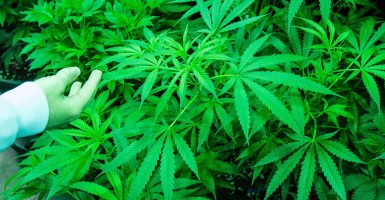On Tuesday, the Washington Post published an op-ed by pro-pot author Radley Balko headlined, “Since Marijuana Legalization, Highway Fatalities in Colorado Are at Near-Historic Lows.” The piece leaves the reader with the impression that legalizing marijuana may have something to do with traffic fatalities going down in Colorado. He does admit that the fatality figures “don’t suggest that pot had anything to do with” the lower numbers, but then says that if fatalities were going up, “supporters would be blaming it on legal marijuana.”
Let’s look at the relevant data, and let the reader draw his own conclusion. A published academic peer-reviewed study and another thorough study set to be released next Monday show:
- An increase in marijuana-related traffic fatalities in Colorado since 2009
- An increase in marijuana-related traffic fatalities in Colorado compared to non-“medical marijuana” states since 2009
- Alcohol-related fatalities remained the same
In the spirit of full disclosure, I am strongly against the legalization of marijuana and have written and spoken about it here, here, here and here.
>>>Marijuana Is Harmful: Debunking 7 Myths Arguing It’s Fine
Balko’s op-ed is just the latest attempt to convince the public that marijuana legalization is good public policy – despite the fact that the data points to the opposite conclusion.
First, some background. Each state is required to submit traffic fatality data annually to the National Highway Traffic Safety Administration (NHTSA) through NHTSA’s Fatality Analysis Reporting System (FARS). The data, naturally, is compiled by each state.
The 2013 data from Colorado has not even been submitted to FARS, and will not be until late December 2014. The 2013 data is critical since it is the only data that reflects the impact of recreational legalization, since Colorado legalized marijuana in 2012.
The Washington Post op-ed analyzes fatality data from the Colorado Department of Transportation. But analyzing generic traffic fatalities in Colorado is, quite frankly, irrelevant. That is like concluding the jobs picture is improving when the unemployment rate goes down, yet failing to mention that the labor participation rate is at an all-time low.
Colorado traffic fatalities have gone down since 2007, but they went up in 2012. More to the point, Colorado traffic fatalities between 2007 and 2012 involving operators testing positive for marijuana use increased 100 percent over that period—from 39 in 2007 up to 78 in 2012.
In 2007, those marijuana-positive drivers represented 7 percent of all total fatalities in Colorado. In 2012, those 78 marijuana-positive dead drivers represented 16 percent of all total fatalities in Colorado.
Of course, we have no idea what actually caused those fatalities. Was the accident caused by marijuana, distracted driving, road conditions, alcohol or something else? We can’t know. But the data which is about to be released next week by the Rocky Mountain High Intensity Drug Trafficking Area (a grant program administered by the White House Office of National Drug Control Policy) will show the number of drivers in Colorado who had fatal car crashes who tested positive for marijuana, and show the increase since legalization.
Marijuana was in essence legalized in Colorado in 2009, when the state commercialized the sale of so-called “medical marijuana.” By commercializing the sale, and thus consumption of marijuana across the state, the state saw a large increase in use by its citizens, and citizens from other states, so-called pot tourists.
In other words, 2009 was a pivotal year for Colorado and its’ drivers.
In the three years prior to 2009 (2006-2008), Colorado averaged 35 drivers per year who tested positive for marijuana in fatal accidents.
In the three years after 2009 (2010-2012), Colorado averaged 57.3 drivers per year who tested positive for marijuana use in fatal accidents—a 64 percent increase over the pre-2009 numbers.
Intoxicants, like alcohol or marijuana, clearly do not improve driver safety, regardless of misleading titles and half-baked op-eds.



























